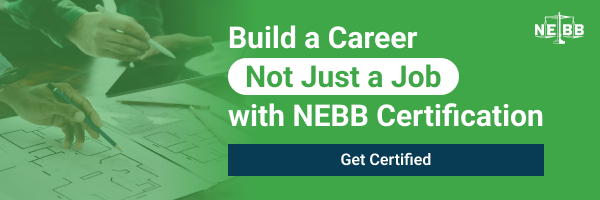In laboratory environments, safety is paramount.
Fume hoods play a critical role in maintaining safety by containing hazardous fumes and vapors that pose serious health risks if not properly contained. Fume hoods are essential in protecting labs, hospitals, and educational facility personnel from these unseen hazards.
How can you be sure your fume hood performance is up to the task?
This is where fume hood testing (FHT) comes in—a process that ensures these critical devices are operating at peak efficiency.
In this blog, we’ll unveil the essential tasks behind fume hood testing procedures, exploring everything from the basic steps to the factors that impact performance, as well as how you can become certified in this essential field. Read on to learn why regular fume hood testing is non-negotiable for a safe and effective workspace.
What is Fume Hood Performance Testing?
Fume hood testing evaluates the performance of laboratory fume hoods to ensure they are functioning properly while providing the necessary protection to users.
This involves a series of tests that measure the fume hood’s containment and overall operational efficiency. The goal is to verify that the fume hood effectively removes hazardous fumes, vapors, and dusts through proper exhaust ventilation.
The Basics of Fume Hood Performance Testing
Fume hood testing procedures have been refined by both NEBB & ASHRAE to include required steps and procedures to be followed:
- Visual Inspection: Although not listed as the first step, a thorough visual inspection of the fume hood to check for any physical damage, blockages, or obstructions in the airflow paths is recommended prior to any testing.
- Airflow Face Velocity Measurement: A critical part of the testing process is establishing an average airflow face velocity measured using a hotwire anemometer. This establishes a baseline for comparison to future testing. Remember, airflow face velocity is not indicative of containment.
- Airflow Visualization Test: A smoke test helps visualize the airflow patterns both within the fume hood and in front of the unit. A smoke pen or generator will produce a visible smoke that highlights air movement into the hood and how well it is being exhausted. Additionally, the laboratory airflow characteristics can be evaluated to determine the effects on the performance of the fume hood.
- Tracer Gas Static Test: To verify containment of the fume hood, a tracer gas test should be conducted. This involves releasing an inert gas within the hood, then measuring the concentration of the gas outside the hood to determine containment quantitatively.
- Tracer Gas Sash Movement Effect Test: This verifies effect of opening & closing the sash, as indicated in the standard, on the containment of the fume hood in a quantitative method.
- Tracer Gas Perimeter Scan Test: Verifies any leakage that may occur and indicate the location of the leakage for future remediation.
- Alarm and Monitoring Systems Check: All fume hoods are required to be equipped with alarms and monitoring systems that alert users to airflow issues. These systems must be checked at least yearly and calibrated to ensure they are functioning correctly.
What Factors Impact Fume Hood Performance Testing?
Several factors can impact the effectiveness of fume hood testing and the overall performance of the hood:
- Airflow Variations: Changes in laboratory ventilation systems, such as fluctuations in air pressure or exhaust fan performance, can affect the fume hood’s ability to contain.
- Hood Design and Condition: The design of a fume hood, including its size, shape, and sash type, as well as its physical condition, can impact its performance. Regular maintenance is an essential part of laboratory readiness.
- User Behavior: How users actually utilize the fume hood can significantly influence its effectiveness. Proper training and adherence to best practices are crucial.
- Laboratory Layout: The placement of the fume hood within the laboratory, as well as its proximity to doors, windows, and high-traffic areas, can affect airflow patterns and containment efficiency.
- Environmental Conditions: Temperature, humidity, and even the presence of other equipment can impact fume hood performance. Testing must include these variables to ensure accuracy.
Getting Certified in Fume Hood Performance Testing
Becoming certified in fume hood performance testing ensures you have the knowledge and skills to evaluate and maintain these critical safety devices properly. Certification programs offered by NEBB provide comprehensive training on testing procedures, standards, and best practices.
Steps to Certification
- Education and Training: Enroll in the NEBB FHT certification program. NEBB offers seminars that cover the theory and aspects of fume hood testing.
- Hands-on Experience: The seminar provides hands-on training while working under the supervision of certified professionals. Discussions of issues and solutions provide an understanding of questions faced in the real world.
- Examination: Pass a written and practical certification exam that tests your knowledge of fume hood testing procedures, standards, and safety protocols.
- Continuing Education: Stay up-to-date with industry developments and maintain your certification through ongoing education and re-certification requirements.
Fume Hood Testing Procedure: Conclusion
Ensuring the safety and effectiveness of laboratory fume hoods through periodic testing and maintenance is essential for protecting staff and maintaining a safe working environment.
Have we piqued your interest? If you are interested in becoming certified in fume hood performance testing, contact NEBB today to learn more about our comprehensive certification programs. With the proper training and certification, you can ensure that your laboratory fume hoods are functioning correctly and providing the necessary protection to all users.
